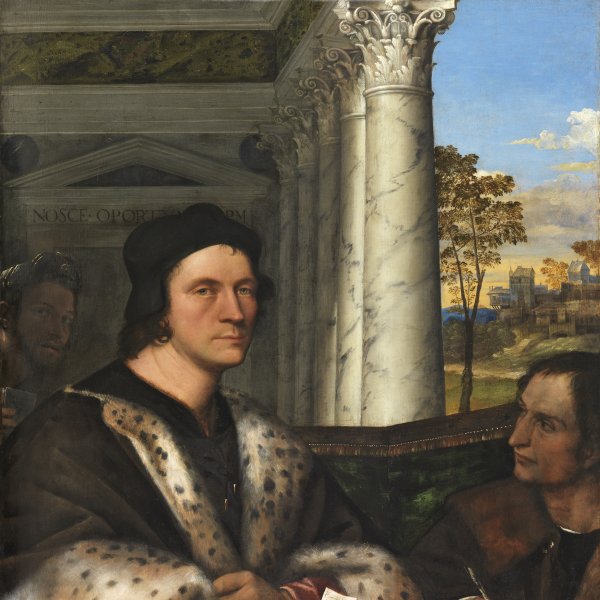Sebastiano del Piombo (Sebastiano Luciani)
According to Vasari, the painter Sebastiano Luciani, known as Sebastiano del Piombo, was born in 1485 in Venice. A musician before becoming a painter, Vasari also states that he trained with Giovanni Bellini. His early works are influenced by the style of Giorgione, as is evident in his painting of Salome (National Gallery, London). After the premature death of Giorgione, Sebastiano moved to Rome in 1511 on the suggestion of the banker Agostino Chigi, for whom he undertook the fresco decoration of the Villa Farnesina. During his first years in Rome Sebastiano made close contacts with Raphael who inspired him to produce some of his best portraits, some of which were erroneously attributed to Raphael for many years, including Portrait of Ferry Carondelet and his Secretaries (Museo Thyssen-Bornemisza, Madrid). Sebastiano’s most creative period can be located between 1516 and 1527 in Rome, where he lived and worked. Like many of his contemporaries his work reveals the influence of Michelangelo with whom he was friends and with whom he collaborated, producing paintings based on drawings supplied to him by Michelangelo, including The Flagellation in the Borgherini chapel and The Raising of Lazarus (National Gallery, London) of 1519. After Raphael’s death in 1520 Sebastiano became the leading figure in the Roman art world. In 1531 Clement VII appointed him custodian of the pontifical lead seals, hence the name used by the artist, based on the Italian word for lead. According to Vasari this appointment enabled the artist to reduce his output and when he was obliged to work “it greatly pained his soul”. An outstanding portraitist, among Sebastiano’s most notable paintings are the Portrait of Clement VII (Museo di Capodimonte, Naples), The Virgin of the Veil of around 1526 (Národní Gallery, Prague), and the group of works now in the Museo Nacional del Prado, Madrid. During the last decade of his life Sebastiano focused exclusively on portraiture.





